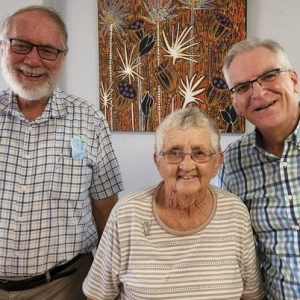Peter MALONE
Black and Blue
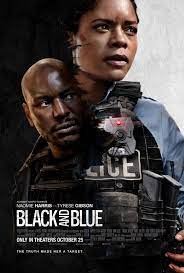
BLACK AND BLUE
US, 2019, 108 minutes, Colour.
Naomie Harris, Tyrese Gibson, Frank Grillo, Mike Colter, Reid Scott, Beau Knapp, Nafessa Williams, James Moses Black, Dineen Tyler.
Directed by Deon Taylor.
For audiences who enjoy police thrillers, this is of interest, action entertainment, the action taking place over a vigorous 24 hours.
There is a prologue with a rap song about the state of American cities played over a plane landing in the US, indicating someone returning. In this case it is an Afghan veteran, played by British actress Naomie Harris, notable as Miss Moneypenny in the James Bond films with Daniel Craig and Oscar nominated for Moonlighting). There is a filling out of her story throughout the film, coming from a neighbourhood of oppression in New Orleans, opting out, enlisting for Afghanistan, serving there, trained there, returning to take up a job in the local police force.
However, there is corruption in the police force, being cracked down on by the authorities. The corrupt police are led by Frank Grillo in yet another villainous role. His name is Malone. The corruption is widespread throughout the police, drug busts, the group keeping half of the financial proceeds and dividing them up.
Alicia, on night duty, witnesses the killing of the nephew of a drug lord, recording it all on her body cam. And she is shot at, wounded, but skilled at escaping. However, she enlists the help of Mouse, Tyrese Gibson, whom she had known in the past, and who runs a local supermarket. She glues her wound together, able to escape, but finally going to his apartment.
There are quite some complications with the action, the police wanting to get the body cam and destroy the evidence, a meeting with the drug lords, Malone explaining that it was Alicia who killed his nephew.
There is some tension in the action, Alicia holding her own, using her wits, and Mouse able to disguise himself as police and upload the evidence from the body cam.
While many praise Black and Blue as interesting and exciting police action, there are a number of critical comments, rather racist, criticising the film for stating that police were corrupt, especially white police.
The film is directed by Deon Taylor, veteran of many action films, including feature films, The Intruder and Fatale.
- The title? Police thriller? Corrupt police? Heroism and principles?
- The new audience sitting, the city, the neighbourhoods, poor neighbourhoods, police precincts, old warehouses, interiors? The streets, chases? The musical score?
- The prologue, the song about the US, grim picture? The plane landing in New Orleans? Alicia, the gradual revelation of her story, in the neighbourhood, friendships, broken, her enlisting, service in Afghanistan, training and skills, return to the police? Her not being accepted on return?
- Police work, Alicia and Kevin, rapport, going to the supermarket, meeting Mouse, meeting Missy and Jamal, her spurning Alicia, his going to the family function, her being allotted to Brown, seeing him in the company of Malone? The night’s work, going to the warehouse, told to stay, hearing the shots, approaching, seeing Malone kill Zero, Smitty shooting her, wounded, her escape?
- The importance of the body cameras, Alicia filming the events, Malone and the others pursuing her for the body cam?
- Alicia, using her Afghan training, eluding the pursuers, going to the supermarket, the encounter with Mouse, the past, his wariness, the threats to him, his decision to protect Alicia? The continued pursuit, her going to his apartment, talking, Jamal seeing her, Jamal and the phone image about her killing Zero? The discussions with Mouse, getting some rest?
- Malone, the background of the drug deals, splitting the proceeds, the number of police in on the plot? Local government clamping down on corruption? The link with the dealers, with Zero, his uncle, the killing of Zero? The need to eliminate witnesses? His power over the rest of the men? Smitty as his henchmen?
- Alicia, in the street, picked up by the police, her having the radio connection and hearing the truth? Ringing Kevin, his being in on the act? His explanations, change of heart, helping Mouse get through?
- Alicia, the wound, gluing it together, her skills, escaping? Hiding the body cam? Being taken by the drug had, his wanting vengeance on, her explanations, the body cam, the tension, discovering the truth? Her getting away, giving the body cam to Mouse, his disguise as police, going to headquarters, uploading the material, the threat from the policeman with the gun, turning the tables, the police chief, her earlier discussions with Malone and the others, her issuing the arrest warrant?
- Malone, Smitty, his fight with Alicia, his death? Out in the open, the crowd, Alicia taking charge, the snipers aiming at her? The fight? The onlookers photographing? The order coming through, Malone and his arrest?
- The earlier scene of Alicia visiting her mother’s grave, the finale, the flowers, her gratitude towards Mouse?
- Some American criticisms against the film showing corrupt police, corrupt white police and the African-American lead?
Star Trek: Generations
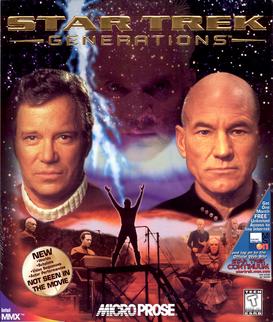
STAR TREK: GENERATIONS
US, 1994, 118 minutes, Colour.
Patrick Stewart, William Shatner, Jonathan Frakes, Malcolm McDowell, Brent Spiner, Lavar Burton, James Dohan, Walter Koenig, Alan Ruck, Jacqueline Kim, Whoopi Goldberg.
Directed by David Carson.
In its time, 1992, this film was highly significant. It was a transition film from the command of Capt James T Kirk to Capt Picard.
William Shatner had appeared as Kirk since the 1960s in many seasons of Star Trek on television. In 1979, Robert Wise directed a cinema version and this series continued in cinemas until 1991, six films in the series. This was the era of Spock, Scotty and many other members of the Start Trek team who had become popular over the decades. And it showed the conflict with the Klingons.
However, in the 1980s, a television series had begun with Patrick Stewart as the captain of the Enterprise, Picard.
With Generations, the film opens with a new generation, Alan Ruck is the commander of the Enterprise, going on mission, but ill-prepared with equipment, coming into conflict, the entry of a mad scientist villain played by Malcolm McDowell, Captain Kirk and some of the veterans coming to inspect the Enterprise but having to become involved with the action, and its seeming that Kirk died in action.
The film goes ahead in years, quite unexpectedly leading to a recreation of 18th and 19th centuries British Navy, ships, uniforms, styles – especially the re-enactment of an accusation and walking the plank, a prank when somebody was promoted. So, Patrick Stewart at home in this context, with Jonathan Frakes as his assistant. However, going further into the Enterprise, there was all the technology of the space ship as well as various members of the crew including LeVar Burton with his special machine on his eyes. And, and kind of replacement for Spock, the android Data, played by Brent Spiner.
There is quite some humour in this film with the character of Data, his being inserted with a human chip and his having to deal with it, understanding jokes after many years, a sense of humour, a prank being explained and then his launching one of the staff into the ocean, his doing his job but being tangled emotionally.
Then the Klingons reappear threatening the enterprise.
However, it is the mad scientist who is the focus of the drama, finding his place in the Enterprise, trying to manipulate the technology so that he can find what is called the Nexus. The crew of the Enterprise have to stop him, especially Picard going personally to confront him on vast cliffs.
However, the scientist seems to succeed and Picard finds himself in some bewilderment in the past, finding himself with the wife and family, their warmth towards him, celebrating Christmas. He also encounters Kirk working in a forest house, chopping wood. The mystery is explained by Whoopi Goldberg who had appeared on the Enterprise, genial wisdom, able to explain the Nexus and the challenge to both Kirk and Picard.
Which leads then to stepping back in time, the possibility of changing history, Kirk and Picard fighting the scientist, getting control of his technology and power, fights and falls, Kirk being wounded – and going out honourably from the series, leading Picard back to the Enterprise and further adventures.
There were three more films sequels in this Picard series.
Who? Where? MSC 2022, Northern Territory
Who? Where? MSC 2022, Northern Territory
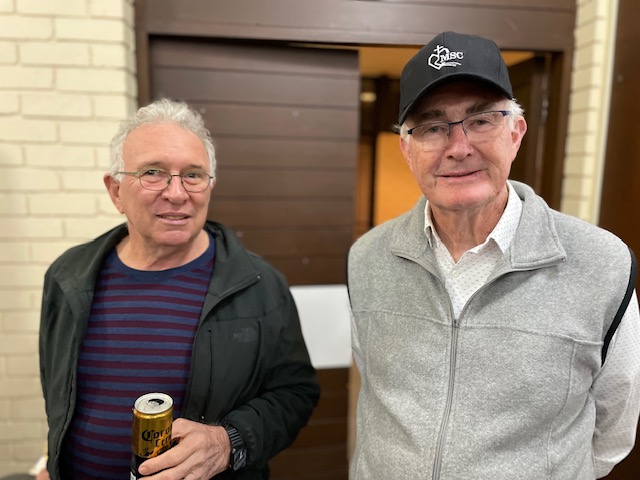
Chris McPhee in recent visit to NT, with Sister Anne Gardiner OLSH and Leo Wearden
We recently posted the news of MSC leaving long-served missions/parishes, Tiwi Islands, Daly River.
Here are the men in the NT in 2022

Community leader, Wadeye, Leo Wearden
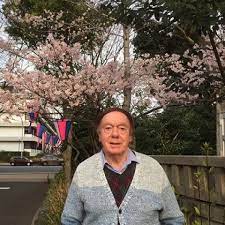
Vicar General, Malcolm Fyfe
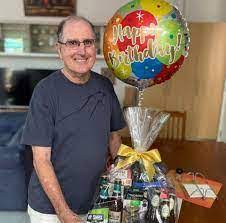
Parish priest, Nightcliff, John Kelliher

Retiring parish priest, Nauiyu, Daly River, Peter Huan

Retired, Herman Kooyman
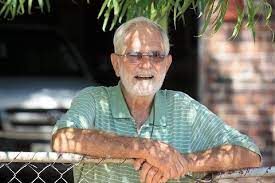
Temporary parish priest, Warrumiyanga,, Bathurst Island, Vince Carroll
Did you know that the first editor of Annals was a Randwick laywoman, Mary Agnes Finn?
Did you know that the first editor of Annals was a Randwick laywoman, Mary Agnes Finn?
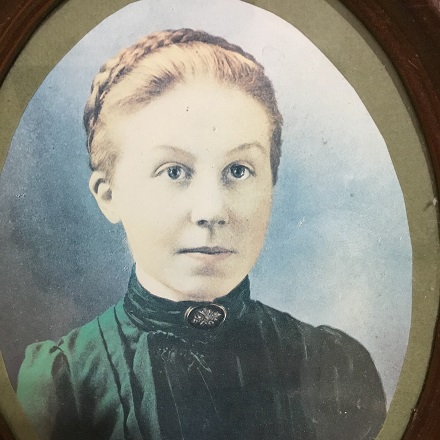
With thanks to Margaret Scott, related to the Finn family, for the photo from Brenda Carmody (Finn) niece.
From the Randwick OLSH Parish Bulletin, 2011:
It’s hard to look at the history of Our Lady of the Sacred Heart Church Randwick without mentioning the name Finn. For as long as there has been a Catholic Church in Randwick there has been a Finn presence. The Finn family has lived in Randwick since the 1870s, and assisted the Missionaries of the Sacred Heart in establishing a parish in Randwick. The first editor of Our Lady of the Sacred Heart was Mary Agnes Finn.
She also wrote the book Memories of Randwick, a historical review of the parish’s first fifty years. One of her nephews, Ken Finn, a former mayor of Randwick, has been a longstanding parishioner of Our Lady of the Sacred Heart. Ken Finn’s grandmother, Mary, was sponsored into the Catholic Church by St Mary MacKillop, a lifelong friend, and baptised by their mutual friend, Fr Julian Tennyson-Woods.
Two of Mary’s grand-nephews became MSC priests – Fathers Don and Doug Smith. Kathleen, another early Finn, helped the Brown Nurses to start their mission in Coogee in 1913 and inaugurated their annual Christmas Appeal and Fete.
John McMahon MSC wrote:
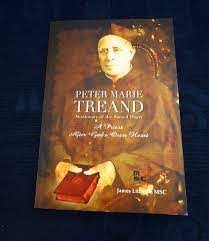
The first issue of Annals appeared in December 1889. The driving forced behind it was a pioneer Missionary of the Sacred Heart, Emile Merg, who came to Sydney in 1887 and was appointed as curate to Randwick Parish until he left in 1909. Being a French-speaking priest he depended very heavily on a gifted volunteer trained teacher in the parish school at Randwick named Mary Agnes Finn. It was Miss Finn who translated into English much of the early material in Annals and who wrote many a short story and the longer serial stories for so many years to come. Her brothers were also well-known commercial printers in the city of Sydney and became before long the early printers of Annals.
When Pierre Treand became Superior of Randwick and Provincial of the MSC in Australia, he took over Annals and he too was very dependent on Mary Agnes Finn as well as on a rising younger Catholic journalist, Miss Agatha le Breton, also a teacher, who wrote under the pen-name "Miriam Agatha". These two dedicated and gifted ladies did most of the writing for Annals and were something more than mere contributors. Were it not such an ugly word I should be inclined to refer to them as "editresses".
And, Paul Stenhouse in his final article for Annals, its final issue, November-December 2019, wrote:

The first editor of the Annals of Our Lady of the Sacred Heart was, surprisingly for the time, a woman.
Mary Agnes Finn, a devout member of an old-established Randwick Catholic family, was assisted by Fr. Emile Merg, MSC, an Alsatian priest whose English at the time was poor and who was, on paper, responsible for the editing and production of the infant magazine.
Because of attitudes prevailing at the time, Mary Agnes Finn was never given the recognition that was her due. Her role as editor was never publicised, and apart from the regular pieces carrying her by-line, she worked in relative obscurity. Yet her role was crucial.
THANK YOU Priyo –MSC Regional Superior in Japan for nine years.
THANK YOU Priyo –MSC Regional Superior in Japan for nine years.
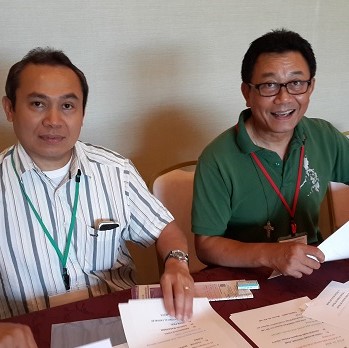
On behalf of the Australian Province, we would like to thank Priyo so much for his tireless leadership as the Regional Superior of Japan. He has been the Regional leader for well over nine years and during that time he has shown extraordinary stewardship of the Region – for this we are very grateful.
In the recent consultation with all members in the Japan Region it was noted with great appreciation Priyo’s commitment to, and his tremendous effort in, bringing together members of the community and setting the Region’s direction for the future of the MSCs in Japan.
It is with great confidence that with Priyo’s experience and support and encouragement he will guide and mentor Fr Bernardus Tethool msc, who we are also proud to advise as the new Regional Superior of Japan. With both these men and the whole MSC Japan Region we are certain that together, as one, they will all reach out to the people in Japan to further strengthen our MSC mission.
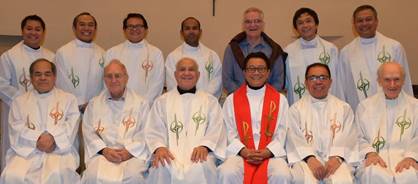
MSC Japan
As Provincial, I would like to personally thank Priyo for his openness, honesty, frankness, and friendship over our time together in leadership. I have been overwhelmed by the work, the mission that has happened in the past and is still alive and happening today – the tireless works that have and are continuing; parish ministry and parish buildings, outreach to migrants, child minding and early child development education, mission and evangelisation – makes us all very proud, as it should to Priyo, as he looks back over his nine plus years as the Regional Superior… to me it’s amazing to see – so thank you.
Chris McPhee msc
Provincial
Vita & Virginia
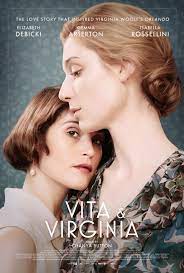
VITA & VIRGINIA
UK, 2018, 110 minutes, Colour.
Gemma Arteton, Elizabeth Debicki, Isabella Rossellini, Rupert Penry-Jones, Peter Ferdinando, Emerald Fennell, Gethin Anthony, Adam Gillen.
Directed by Chanya Button.
The impact of the film will depend on audience interest in the lives and careers of Vita Sackville-West and Virginia Woolf and, especially interest/curiosity in their relationship.
The screenplay for this film has been written by Eileen Atkins, a long-time expert on Virginia Woolf, writing the screenplay for the 1998 film version of Virginia Woolf’s Mrs Dalloway. Much of the dialogue incorporates the mannered speaking in written style of Virginia Woolf, literate, philosophical, appealing to a more specialised audience.
At the centre of the film is Gemma are to turn as Vita Sackville-West, successful author in the 1920s, notorious for having run off with a woman, her mother bring her back (a cameo by Isabella Rossellini looking and sounding very much like her mother, Ingrid Bergman). Peter is married to the British diplomat, Harold Nicholson (Rupert Penry-Jones). But she is fascinated with the reputation of Virginia Woolf and her husband landed and the Bloomsbury group, labelled the Socialist, significant for British literature at the time. She invites herself to a party and meets Virginia, striking up an association which leads to friendship.
Virginia Woolf is played by Elizabeth to be King, tall and elegant, sometimes uncertain, committed to her writing, supported by her husband, prone to mental instability. The film traces the developments in the friendship, the two women and their time together, sharing ideas, Virginia Woolf opening herself to further experiences, Vita Sackville-West rather manipulative.
The film recreates the costumes and decor, and cars, of the period, the groups meeting, discussions, idiosyncrasies, painting arts and exhibitions, publications of novels, Virginia tentative, having some kind of breakdown after the publication of each novel.
There is a set of self-centredness and fickleness about Vita Sackville-West, even in her pursuit of Virginia Woolf and her sexual control over her. However, Virginia has the idea to create the novel Orlando, the male/female central character, modelling it on Vita and getting Vita to pose for a range of photos to illustrate the novel – which is a popular success.
An idiosyncratic film with main appeal to audiences interested in the Bloomsbury group and Virginia Woolf.
- Audience interest in Vita Sackville-West and Virginia Woolf? Knowledge of them, their literature, their lives, the relationship? Virginia Woolf’s writing of Orlando?
- Britain in the 1920s and 30s, social class, educated backgrounds, literature, literary groups, social groups? The place of Virginia and Leonard Woolf? Homes, social gatherings? Holiday homes and grounds? Diplomatic posts in Iran and the Middle East? Atmosphere? Musical score?
- The focus on Vita Sackville-West? Her literary experience, a social background, the relationship with her mother and tensions, money and support, her affair and running away, her mother intervening? Her marriage to Harold Nicholson? Comments on marriage, the BBC broadcast with him, the chapel and her talking about marriage and contracts? An open marriage? At home, their two children, the grandmother’s intervention about them? Harold as diplomat, personality, abroad, relationships, yet dependent on Vita? Her love for him, dependence, independence? Her role as wife and mother?
- Vita and her interest in Virginia Woolf? Her mother’s disapproval? Going to the party, the friends and associates, meeting Virginia? The beginning of a friendship? Love, seduction, betrayals?
- Virginia, her screen presence, mannerisms, her relationship with her husband, her writing and reputation, Vita more popular? The room for her writing, the X on the door? Her relationship with Leonard, the reputations, socialists? Virginia and her emotions, mental health? Her way of speaking, literary? The tentative meetings with Vita, liking her, listening to her, sharing? Vita and the continued presence, comments, frank talk, challenging Virginia?
- Virginia Woolf, emotional, marriage, no children, restrained? The encounters with Vita, kiss, reactions, caution, her breakdowns, going with Vita, the sexual encounters and the effect on her?
- Vanessa Bell, Duncan and his flamboyant style, artists, friendship with Virginia, concern about her, her health, emotional relationships with Vita?
- Vita, the discussions about going to take a run, her presence, society, the return to England? The return to Virginia?
- Vita, self-centred, the depth of her love for Virginia? The encounter with Mary, bring her to the social? The book dedicated to her? Virginia and the sense of betrayal?
- The idea for Orlando, male/female, as based on Vita? The exhilaration of the writing? The photo sessions and illustrations of Orlando with Vita? The publication, Leonard’s continual support for Mrs Dalloway, To the Lighthouse, Orlando?
- Lady Sackville going to rebuke Virginia about Orlando? Vita liking it? The popularity of the book and sales?
- The postscript, the end of the affair, the friendship continuing?
- Insight into the literary types of the 1920s and 30s, the Bloomsbury group, Vita Sackville-West and her literature? Virginia Woolf and a contribution to English literature?
Moonshot
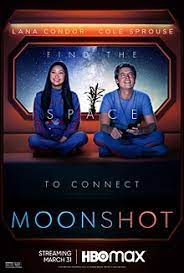
MOONSHOT
US, 2022, 104 minutes, Colour.
Cole Sprouse, Lana Condor, Zach Braff, Mason Gooding.
Directed by Christopher Winterbauer.
A futuristic space travel, romcom, for HBO Max streaming. It might have been more successful had it been for the Disney Channel where Cole Sprouse and his twin brother Dylan appeared regularly from the age of six. This film has that kind of Disney Channel atmosphere.
On the big question is why it was called Moonshot when the travel is to Mars.
The target audience seems to be 20+ or minus – and not too far into the 20+!
The focus is on Walt, who speaks to camera, telling of his dreams and ambitions to go to Mars – is not the greatest student, often slow on the uptake, working as an assistant the barista, supervised by a robot. At a party, he encounters a young girl who is to travel to Mars the next day, spent some time with her, is infatuated, determined to get to Mars, even to stowing away.
However, at the bar, he encounters Sophie, Vietnamese born actress, Lana Condor. She is about to go to Mars to meet her boyfriend who works there, and the family who took her in in time of trouble. She and Walt clash. However, he tells her of his dreams and goes to see her off at the rocket launch, eventually getting himself on board.
There are the predictable romcom encounters, liking, dislike, and at one stage Sophie telling Walt to shut up. The screenwriter and the director don’t take any notice of this advice and Walt keeps on talking and talking (a charitable commentator likening him to a young Ryan Reynolds).
So, there are the scenes on the spacecraft, scenes of arrival, Sophie and difficulties with her boyfriend, wanting to return to Earth. There is Walt, arrested and, the revelation in the form of Zach Braff, the Elon Musk style entrepreneur of space travel, who sees Walt is so dumb that he is an advertising plus, that ordinary people seeing what he could achieve feel that they could, even better!
And the moral of the story is, be yourself, fall in genuine love, know your own story, life everywhere is much the same…
AltRight: Age of Rage
ALTRIGHT: AGE OF RAGE
US, 2018, 104 minutes, Colour.
Daryle Lamont Jenkins, Richard Spencer, Mark Potock, Jared Taylor, Andrew Breitbart, David Duke.
Directed by Adam Bhala Lough.
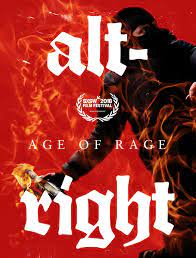 For American audiences, this 2018 documentary is a reminder of the predominance of white supremacist movements in the US in the 2010s, and the movement feeling endorsed by the nomination of Donald Trump for the Republican Party, his election to the presidency. Segments of his speeches are included in this film. However, it was made as a contemporary look at the supremacist stances, not so much the Proud Boys and other militant groups but, rather, the intellectuals who advocate white superiority. The film climaxes in the clashes and protests in Charlottesville West Virginia in 2017 and the 20-year-old supremacist who drove his car into the crowds, killing a woman and injuring many others. This episode went around the world,
For American audiences, this 2018 documentary is a reminder of the predominance of white supremacist movements in the US in the 2010s, and the movement feeling endorsed by the nomination of Donald Trump for the Republican Party, his election to the presidency. Segments of his speeches are included in this film. However, it was made as a contemporary look at the supremacist stances, not so much the Proud Boys and other militant groups but, rather, the intellectuals who advocate white superiority. The film climaxes in the clashes and protests in Charlottesville West Virginia in 2017 and the 20-year-old supremacist who drove his car into the crowds, killing a woman and injuring many others. This episode went around the world,
As the years have gone on, this documentary serves to give the background of the development of the supremacist movements, especially with the many interviews on screen presence of the founder, Richard Spencer, and his close associates. There are also many interviews with of lectures by Jared Taylor, a well spoken gentlemanly type but with extreme racist, supremacist and segregationalist attitudes. And there are some moments with Andrew Breitbart, the founder of the media agency, and some scenes with David Duke, head of the Ku Klux Klan.
On the anti-fascists side, Antifa, there is the strong spokesman, Daryle Lamont Jenkins, who appears throughout the film, big, confident, a campaigner, along with his many supporters and protesters.
The sequences in Charlottesville are quite frightening in terms of the two bases for the protest groups, the physical clashes, the non-intervention of the police force, then their interventions.
However, viewed later, after the defeat of President Trump and his attempts to overturn the election verdicts, but especially in the footage of the attack on the Capitol on January 6th 2021 (and the Charlottesville riot indicates passions, those who would be present, fighting and clash spirit), the tone of the film takes a different turn with the presidency of Joe Biden.
The film is against white supremacists but gives them quite an amount of screen time to present their case. Bloggers exhibit the same kind of partisanship. The following two items from the IMDb give an indication of tone and hostility: interestingly, the first blogger calls himself The Sovereign!
The-Sovereign8 July 2020
This is nothing more than propaganda film to make Antifa look good, when they're the real threat to America.
Complete and total propaganda.
eqrangerst2 February 2019
This movie is just another reason I am learning to loathe Netflix. The sheer number of Leftist propaganda pieces they produce/endorse is getting ridiculous.
This excuse for a 'documentary' is just another example of that trash. The reporting is extraordinarily dishonest and biased. Antifa and SPLC are human rights advocates and victims? Please, they're both terrorist organizations with different play books.
Kidnapped/ Australia, 2021
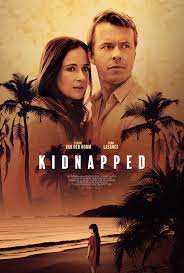
KIDNAPPED
Australia, 2021, 85 minutes, Colour.
Claire van der Boom, Todd Lasance, Melina Vidler, Molly Wright, Jason Wilder, Sophie Tilson, Sami Afuni, Daryl Heath.
Directed by Vic Sarin.
This is a domestic drama, touches of the thriller, made for a popular and undermining audience.
The film opens in Los Angeles, a family deciding to return to Australia, where the mother comes from. She is played by Claire van der Boom. Her husband is played by Todd Lasance. Their daughter is five years old, Molly Wright.
They have unexpectedly won a holiday at a resort where the mother used to go on holidays with her parents – but, as later revealed in a dramatic flashback, not a place for happy memories, especially of her father, his two-timing her mother, starting another family.
However, all is very cheery at the resort and audiences will enjoy the tropical scenery, filmed on an island off Port Douglas. Everything seems to be wonderful for the holiday – except when the little girl, Aria, wanders off and the audience thinks that the kidnapping is happening already, but she has just been looking for shells.
However, she does disappear and the bulk of the film is the frantic search for her all over the island, footage showing that she went into the basement of the Children’s Centre and was not seen again. Needless to say, there is a lot of heightened drama in the searching, the focus particularly on the mother, some harsh words between husband and wife and then reconciliation, getting the help of the local police who are delayed by search warrants, employing the help of a couple that they met on arrival who joined them for a barbecue. They are immediately suspect since they were discussing the difficulties of having a child. There is also the man on security at the Children’s Centre who is revealed to have had a shady past, especially in child trafficking. They are helped by Jane, Melinda Vidler, very agreeable at reception and showing the couple round. With her cheeriness, she is automatically a suspect.
There is a flashback sequence which, if the audience puts its mind to it, would indicate who is to blame, and the motivation – and that is how it is all solved.
Slight and easy entertainment.
Dr Strange in the Multiverse of Madness
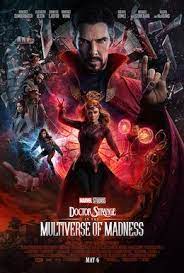
DR STRANGE IN THE MULTIVERSE OF MADNESS
US, 2022, 126 minutes, Colour.
Benedict Cumberbatch, Elizabeth Olsen, Chiwitel Ejiofor, Benedict Wong, Xociti Gomez, Rachel McAdams, Michael Stuhlbarg, Sheila Atim, Patrick Stewart, John Krasinski, Hayley Atwell, Bruce Campbell, Charlize Theron, Anson Mount.
Directed by Sam Raimi.
Box-office -wise, we seem to find ourselves in a world of contemporary multiverses - especially if we are devotees of Spiderman (with Dr Strange himself turning up there, wherever there is). But, more recently, the Daniels were able to sum it up: Everything Everywhere All at Once. Which is, more or less, what is happening in this on-screen multi-verse of madness (with many versions of Dr Strange!).
There is so much whirl of colour, sound, special effects in the opening credit – but that is a foretaste of things to come, only more so!
Which led to the continual question: what is the collective noun for a multi-verse of universes? The mood of the film initially suggested,
a Pot – Puri of universes?
So, here is Benedict Cumberbatch back again after some Spiderman and Avengers adventures, mindful of his initial role as a surgeon, now conscious of his status as magician, his super powers. Benedict Wong is back. Chiwitel Ejiofor is back – and the touch of the villain. And, maybe not quite as romantically as we had hoped, Rachel McAdams is back as Christine. But Tilda Swinton is not back.
The other looming presence here is Elizabeth Olsen, having had great television success as Wanda Wandavision. She mentions that in moving from universe to universe (and there is one spectacular sequence where we are whisked through a multitude of universes, including an animated one), that the characters are Dream walking.
A Dreamwalking of universes?
Central to this adventure is the young woman, America Xotici Gomez, wandering the universes, encountering Dr Strange, needing to be rescued, but also needing to affirm her own superpowers, especially in confrontations with Wanda (who in one universe/or more is a power hungry witch but who in another is a devoted mother).
A kaleidoscope of universes?
This is reinforced by Dr Strange confronted by a panel of powers that be, presided over by, of all characters, Patrick Stewart’s Dr Xavier, with other superheroes led by John Krasinski signalling The Fantastic Four and Hayley Atwell coming from Captain America.
There is no point in asking the reader if they are still with me! Cause and effect have no place much in this scenario, little place for logic – one thing happens, than another, then another, and even more…
So, what are we watching, why are we watching it, fascinated by Benedict Cumberbatch? Intrigued as to what might happen next because it is so unpredictable?
And unpredictability of universes?
- Place of Dr Strange in the Marvel Universe? In his own right, in his own story? In the Spiderman story?
- The previous film giving his background, doctor, surgeon, experience, moving into the mystic Marvel world? His transformation? Superpowers? The audience relying on this knowledge?
- The pre-credit sequence, action, special effects, atmosphere of wonder? This prevailing throughout the film?
- The character of Stephen Strange, his life, Christine, past love, her marriage, his presence, the discussion?
- The presence of the young girl, America, the interactions with Dr Strange, the rescue? The tour through the many universes, the visuals, the characters in each, the atmosphere?
- The presence of Wanda, her place in the Marvel Universe, powers, her having children in the universe, her motherliness? In other universes, power, witchcraft and magic? Her becoming the villain? In each universe, the exercise of power, her returning to the family, the boys, the reaction to her? The struggle within herself? The conflict with Dr Strange? The succession of visual conflicts, ogres and giants, monsters, special effects, transformations in Dr Strange, his different characters in the different universes?
- America, in distress, Dr Strange to the rescue, their adventures together, her character, the flashback to her mother’s, wandering, her powers? Sharing the adventures, the dangers, finding herself, exercising her powers, the confrontation with Wanda?
- The presence of Baron, in the previous film, power, friend with Dr Strange, enemy, his role in the multi-verse, dignity, costume, power? The assembling of the judges? The presence of the leader of the Fantastic Four? Other members? The leader from Captain America? The unexpected presence of Patrick Stewart and Dr Xavier? The confrontation with Dr Strange? With Wanda? The confrontation, the battles, the deaths?
- The nature of the narrative, little cause and effect, a succession of multi-verse episodes?
- The reintroduction of Christine, in different universes, in the universe for the final confrontation? Memories of Stephen? His love for her, declarations? Her response? Helping with the resolution?
- The dramatic buildup to the final confrontation, the crisis for Wanda? Her children, the witch, the interaction between the two? Her final decision?
- America, the encouragement of Stephen, finding herself, exercising her powers?
- Stephen returning to ordinary life, but the transformation, Dr Strange with the eye in his forehead?
- Anticipation of further adventures, the appearance of Charlize Theron?
- The final post-credits to, star Bruce Campbell, selling the pieces, forced to punch himself three weeks – and, “it’s over”!
